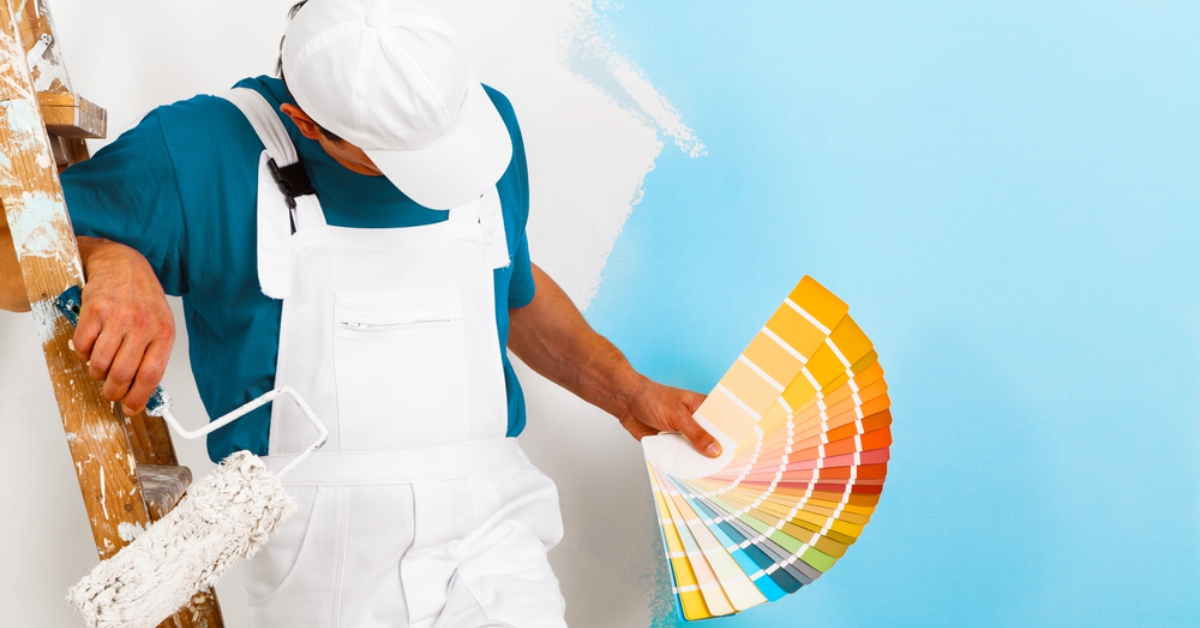Planning a home makeover? Want something more than plain paint? Paint texture can help. It gives walls a bold and unique look. It also hides minor flaws. But it’s not for everyone.
In this guide, we’ll look at the pros and cons of painted texture. We’ll also show you where it works best and what to consider before using it.
What Is Paint Texture?
Paint texture is a style of painting that adds a raised or patterned surface. It gives depth and character to your walls. Unlike flat paint, it stands out, literally.
You can use different tools to apply it. These include brushes, rollers, and even spray paint texture machines. There are many styles to choose from, including:
- Knockdown
- Orange peel
- Popcorn
- Slap brush
- Sand swirl
Some paints come ready with texture spray paint. Others require adding texture materials to regular paint.
Pros of Using Painted Texture
Using texture pain can have many benefits. The pros include:
1. Hides Wall Flaws
Do you have cracks, dents, or uneven drywall? Paint texture covers them. It hides imperfections better than flat paint. That saves you time on wall prep.
2. Adds Personality
Flat paint can be boring. Painted texture brings life to your walls. It adds movement and feeling. It’s a way to make a room feel fresh. This will also make it look creative.
3. Many Styles to Try
There are endless design options. Go for a light, soft look. Or choose bold patterns that pop. You can also mix styles for custom results. Texture paint gives you full control.
4. More Durable
Textured walls handle bumps and scratches better. This makes them a smart pick for busy spaces like hallways or kids’ rooms. You won’t see every little mark.
5. Perfect for Ceilings
Ceilings are often forgotten in home makeovers. But a good painted texture can change that. Textures like popcorn or knockdown add depth and cover flaws on ceilings as well.
Cons of Using Painted Texture
Just like pros, painted textures also have some cons. The cons can be:
1. Hard to Undo
Once you add a textured finish, removing it is tough. It may take sanding or special tools to smooth the wall again. If you like changing styles often, this can be a problem.
2. Can Be Hard to Clean
Dust and dirt cling to textured walls. Cleaning them isn’t as easy as wiping down flat paint. In kitchens or bathrooms, that’s something to think about.
3. Doesn’t Suit Every Room
Too much texture can overwhelm small spaces. Some rooms look better with smooth walls. In these cases, limit the texture to one feature wall or ceiling.
4. Tricky to Apply Right
DIY sounds fun. But applying a textured finish takes skill. Uneven spots can ruin the look. Using texture spray paint helps, but it still needs practice. Hiring a pro ensures better results.
NJ Painting Services has the tools and experience to get it right the first time.
5. More Expensive
Textured painting takes more time and effort. It also uses more paint and tools. That means a higher price tag. Budget for extra costs, especially for large rooms.
Common Types of Paint Texture
Here are some top styles used in home makeovers:
- Knockdown: This texture starts with a spray. Then it’s slightly flattened with a trowel. It gives a soft, mottled effect.
- Orange Peel: It looks just like the name, like the skin of an orange. It’s subtle, modern, and easy to match across rooms.
- Popcorn: Popular on ceilings, especially in older homes. It’s bold and bumpy. It also hides a lot of ceiling flaws.
- Sand Swirl: This mix of textured paint and sand makes flowing, curved lines. It’s soft and decorative.
- Slap Brush: Also called stomp texture. A brush “slaps” the wall to create peaks and patterns. It’s bold and very textured.
Spray Vs. Hand-Applied Texture
Spray paint texture gives fast, even coverage. It’s best for big spaces. It works well with orange peel or knockdown styles. But it needs special equipment. This also requires training.
Hand-applied texture uses rollers and trowels. It can also use brushes. It’s slower but offers control. Great for custom or artistic looks.
Not sure which method is best? Our team at NJ Painting Services can help you choose.
When Should You Use Painted Texture?
Use a textured finish when:
- You want to cover up wall flaws
- You want a unique look
- You’re working on a feature wall or ceiling
- You’re designing a rustic, modern, or artistic room
Avoid texture in places that need frequent cleaning. Or if you plan to repaint often.
Tips for Best Results
- Test First: Try the texture on a small patch to preview the look. Then adjust the technique if needed.
- Prep Thoroughly: Start with cleaning the wall surface. Now let it dry fully. Remove dust and grease. If the wall is already painted, remove it.
- Use Quality Tools: Invest in high-quality rollers, brushes, or tools. This will assist in a smooth application.
- Mix Well: Stir texture paint thoroughly before and during use. This will maintain a consistent texture.
- Work in Sections: Divide large areas into manageable sections. This offers better control and even coverage.
- Watch Drying Time: Allow each coat or layer to dry fully. After this, you can continue.
- Follow Product Instructions: Each brand may differ. Read and follow label directions.
Final Thoughts
Paint texture can change the feel of your space, concealing imperfections and adding unique style, but it may be harder to clean and more expensive.
The key is knowing how to use it. Consider your space and budget. Also, know your long-term plans. If you’re ready to try it, start with one wall.
Moreover, NJ Painting Services is here to guide you. We’ll help you pick the right texture and apply it with expert care. Call us today for a free estimate and see how textured paint can transform your home.





